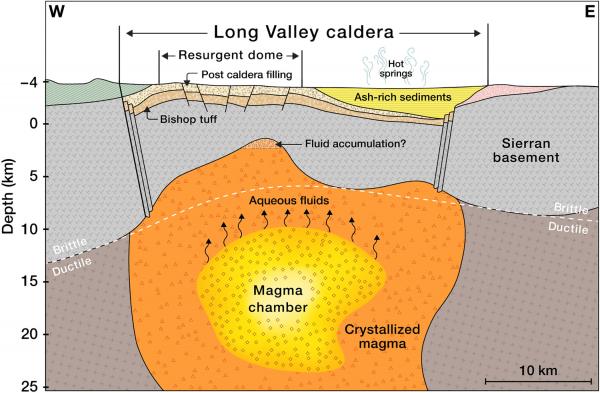An upper-crust lid over the Long Valley magma chamber revealed by fiber tomography
Ettore Biondi
California Institute of Technology

- Date & Time
- Location
- Hybrid in-person at Pasadena and online via Microsoft Teams
- Host
- Co-hosted by ESC and VSC with intro by Alicia Hotovec-Ellis
- Summary
Traveltime-based tomographic methods have been extensively explored and employed by researchers since the 80s. Such algorithms have been successfully applied to various geophysical applications, ranging from seismic exploration to global to regional seismological scales. However, given the advancements in computational architectures over the last 20 years, full-waveform methodologies are now dominating most of the subsurface-parameter inversion applications. These workflows seek to match all the waveforms present within active seismic data or synthetic Green’s functions obtained by cross-correlating ambient noise.
Despite this decrease in the popularity of traveltime-based tomographic approaches, these methods have great potential to be successful when applied to distributed acoustic sensing (DAS) data for seismic applications. DAS instruments can operate on existing telecommunication fibers and transform them into large-scale high-resolution seismic arrays. We demonstrate such potential by applying an Eikonal traveltime double-difference tomography algorithm to DAS data recorded in the Long Valley caldera, located in the Eastern Sierra region of California. This active volcanic area has been extensively studied in the last 50 years and its recent unrest remains still poorly understood.
We employ two DAS arrays composed of almost 9000 channels along a 90-km north-south transect across the caldera to characterize the subsurface structures present underneath the area. We use almost 2000 cataloged events and apply a machine-learning algorithm to accurately pick their P and S arrival times necessary for the tomography. The range and spatial resolution of the DAS arrays allow us to retrieve structures that could not be resolved by previous studies that employed only conventional station recordings.
Our results agree well with previous studies and highlight the presence of a low-velocity basin along the Mono-Inyo craters. Both P- and S-wave models also show a low-velocity structure centered below Mono Lake, which agrees with historical gravity surveys. Moreover, the low Vp/Vs ratio inverted below the Long Valley caldera suggests a lack of newly intruded materials at depth above 10 km and a clear separation between the shallow low-velocity basins and the ≥10-km deep magmatic reservoir.
Closed captions are typically available a few days after the seminar. To turn them on, press the ‘CC’ button on the video player. For older seminars that don’t have closed captions, please email us, and we will do our best to accommodate your request.
 Jump to Navigation
Jump to Navigation